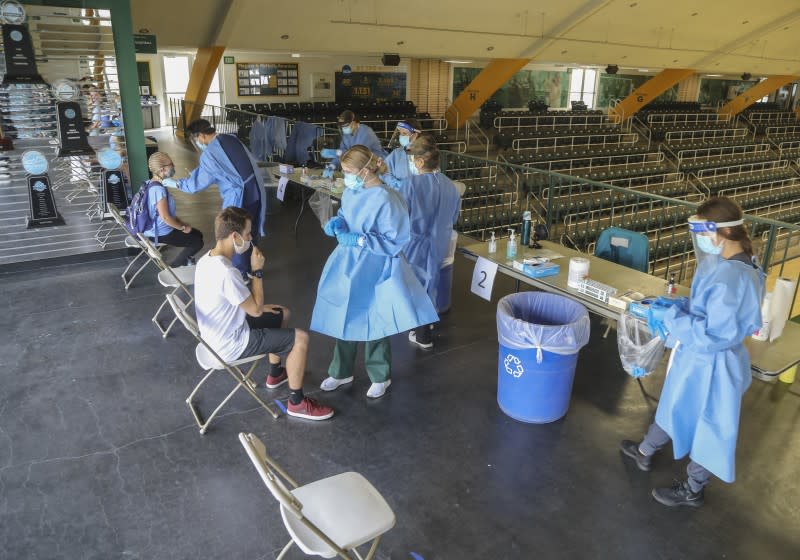Editorial: The CDC blows it again, this time on COVID-19 testing at school

Buried deep within an otherwise reasonable directive by the Centers for Disease Control and Prevention about COVID-19 testing at reopened schools is wording that is out of sync with both the dangers of the current pandemic and existing state rules about infectious disease at schools.
It is “both unethical and illegal to test someone who doesn’t want to be tested, including students whose parents or guardians do not want them to be tested,” says the document released this week. The agency said it was fine for schools to administer COVID-19 tests on a voluntary basis, but not to require them for all students coming to classes.
The problem is that the parents most likely to object to tests are the ones sending sick kids to school. Besides, that wording doesn’t jibe with the law up to now regarding the health of students at public schools.
The courts have repeatedly upheld the right of states to require vaccination of all public school students except those with compromised immune systems or other conditions that make the vaccines dangerous to them. And parents can be required to submit proof that their children have received all their required inoculations.
What about daily temperature checks? That’s also a test of each child’s health status. Does the CDC want to force schools to ask permission?
Of course, nose swabs are more uncomfortable than temperature scans ― although the infamous deep probe that goes through the nose to the throat is giving way to less invasive swabs ― and schools need to be sensitive to that when dealing with children. To the extent possible, parents should be told in advance when their children are being tested and given the opportunity to pull their offspring from school if they can’t bear the thought.
What parents cannot do is act as the arbiters of other children’s health. Most parents support testing. They want their kids back on campus, learning in person, but they want it done safely.
Most schools that do testing are administering it infrequently through random samples of students. The Los Angeles Unified School District already has embarked on a more ambitious COVID-19 testing and contact-tracing program in advance of reopening schools that appears to have broad support from teachers and parents.
In contrast, there already have been cases in other states of parents sending their children to school, knowing that they were infected with the new coronavirus and keeping the information secret. These parents, heedless of the danger their children might represent to others, are the most likely to reject tests at school because their whole plan is to escape detection.
This latest guidance does nothing to restore public trust in the CDC that has been badly eroded by the agency's repeated submission to the science-denying politics of the Trump administration. In August, the CDC issued guidelines to discourage testing of people who had been exposed to the virus ― a recommendation that originated with the White House, not the CDC’s own experts.
Parental permission is required for vision and hearing screenings at school, but no teachers or other students have had their lives placed at risk by children who aren’t getting the eyeglasses they need or who have trouble hearing the lessons. And there’s a way out for parents who refuse to have their child tested for COVID-19 for the good of everyone at school: They can keep the remote learning going from home.
Thankfully, the CDC guidelines offer an opinion but not an order. Schools should test away, putting the health of students and teachers first.
This story originally appeared in Los Angeles Times.

